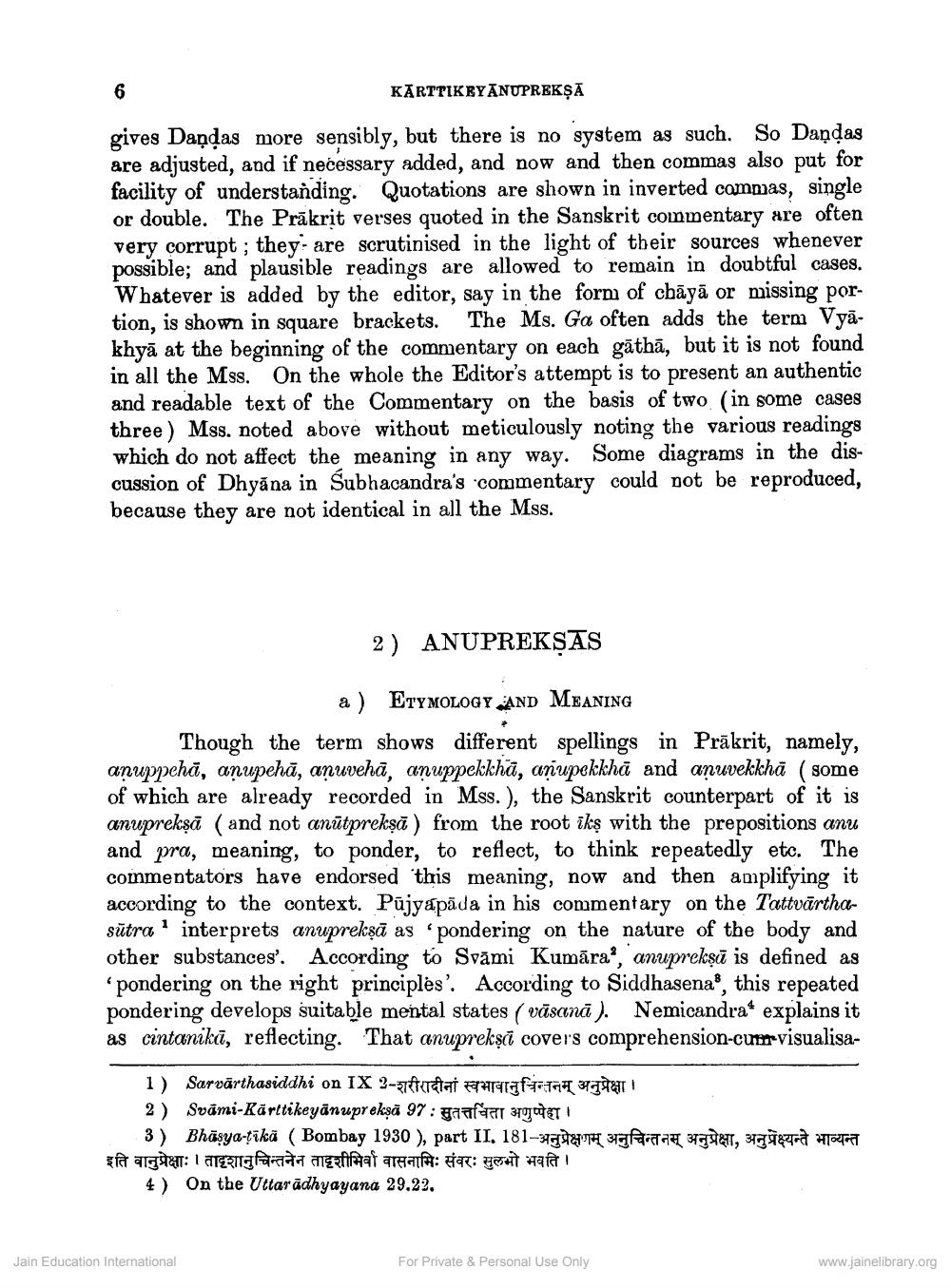________________
KĀRTTIKEYANUPREKŞA
gives Daņdas more sensibly, but there is no system as such. So Dandas are adjusted, and if necessary added, and now and then commas also put for facility of understanding. Quotations are shown in inverted commas, single or double. The Prākrit verses quoted in the Sanskrit commentary are often very corrupt; they are scrutinised in the light of their sources whenever possible; and plausible readings are allowed to remain in doubtful cases. Whatever is added by the editor, say in the form of chāyā or missing portion, is shown in square brackets. The Ms. Ga often adds the term Vyākhyā at the beginning of the commentary on each gāthā, but it is not found in all the Mss. On the whole the Editor's attempt is to present an authentic and readable text of the Commentary on the basis of two (in some cases three) Mss. noted above without meticulously noting the various readings which do not affect the meaning in any way. Some diagrams in the discussion of Dhyāna in Subhacandra's commentary could not be reproduced, because they are not identical in all the Mss.
2) ANUPREKSAS
a) ETYMOLOGY AND MEANING Though the term shows different spellings in Prākrit, namely, anuppehä, anupehā, anuvehā, anuppekkhã, aņupekkhā and anuvekkhā (some of which are already recorded in Mss. ), the Sanskrit counterpart of it is anupreksā (and not anūtprekşā ) from the root īks with the prepositions anu and pra, meaning, to ponder, to reflect, to think repeatedly etc. The commentators have endorsed this meaning, now and then amplifying it according to the context. Pūjyapāda in his commentary on the Tattvārthasūtra' interprets anuprekşā as pondering on the nature of the body and other substances'. According to Svāmi Kumāra", anuprekşū is defined as
pondering on the right principles'. According to Siddhasena®, this repeated pondering develops suitable mental states (vāsanā). Nemicandra* explains it as cintanika, reflecting. That anuprekşii covers comprehension-cumir visualisa
1) Sarvārthasiddhi on IX 2-57ftretat ararafh777 3.HT! 2) Svami-Kärttikeyanuprekşă 97 : gaaf 3TOCUTTI 3) Bhäsya-tākā (Bombay 1930 ), part II. 181-
fara 37 इति वानुप्रेक्षाः । तादृशानुचिन्तनेन तादृशीभिर्वा वासनामिः संवरः सुलभो भवति ।
4) On the Uttarādhyayana 29.22.
, 37
poena
Jain Education International
For Private & Personal Use Only
www.jainelibrary.org




